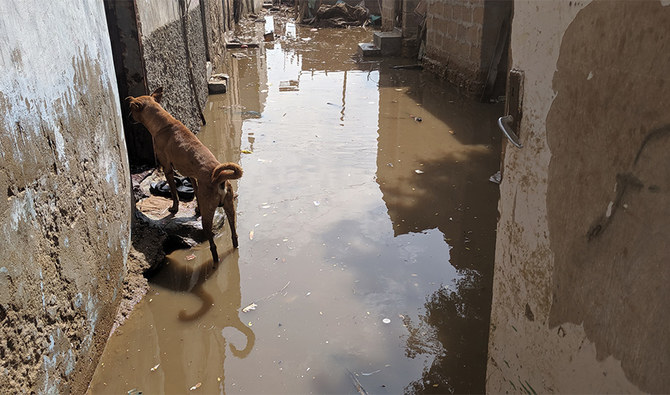KARACHI: Sughra Haroon, who lives in a small hamlet near the Arabian Sea, woke up in the middle of the night, Sunday, and found that her family was surrounded by ascending water. She got hold of her children and spent the rest of the night under the sky at a distant location from her cottage near the seashore.
Haroon’s home in Rehri is among hundreds of villages where water entered people’s homes on Sunday night, after cyclonic superstorm Kyarr affected Karachi’s coastal belt in southern Pakistan, forcing inhabitants, predominantly fisherfolk, to stay awake and alert through the night.
“I was born in this house, and I became a grandmother while living under this roof,” Haroon told Arab News. “It’s not that I haven’t seen tidal waves from the shore, but the water never sneaked up on me before. It was frightening.”
“The water may have receded,” she said on Monday afternoon while pointing to the grimy floor of her hut in Rehri. “But they say its level will be much higher tonight.”
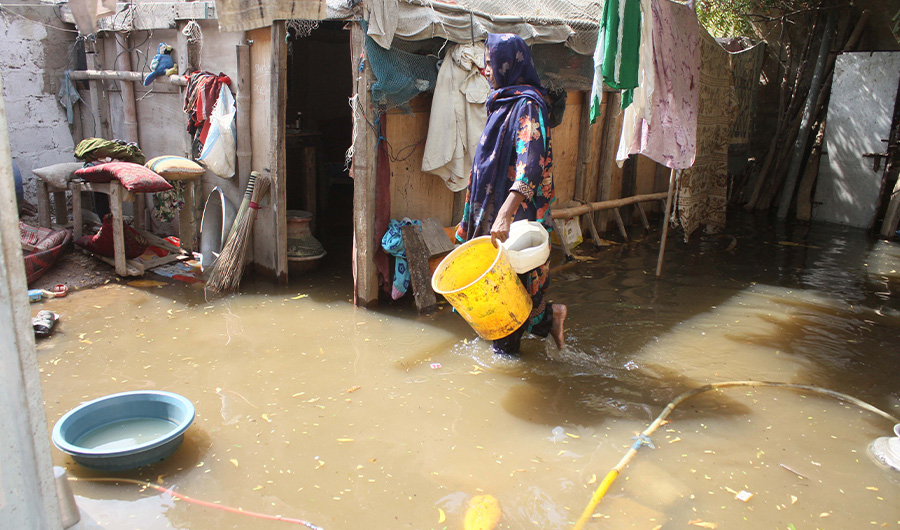
Seawater flooded a home in Chashma Goth, Karachi, due to Cyclone Kyarr in the Arabian Sea on Sunday night. Photograph taken on Oct 28, 2019 (AN Photo)
The Pakistan Meteorological Department said in a statement on Monday: “The Super Storm Kyarr is likely to move further northwest toward Oman coast during the next few days. Currently, none of the Pakistan coastal area is under direct threat from this system. However, under its influence scattered DS/TS-rain is expected in lower Sindh and along Makran Coast during Wednesday-Friday. Fishermen are advised not to venture in deep sea from today.”
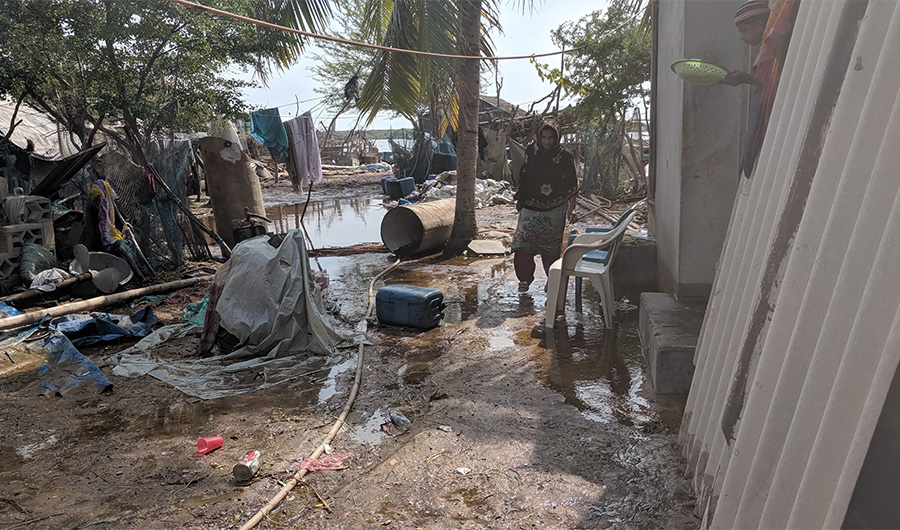
Sughra Haroon checks her belongings after the seawater receded Monday afternoon in Rehri Goth, Karachi. Photograph taken on Oct 28, 2019 (AN Photo)
Some fishermen said that though the sea had always fed their families, it was becoming more dangerous every year for their settlements due to the effects of sea erosion and climate change.
“I was born in this village,” said Shafi Muhammad, 55, a fisherman at Chashma Goth. “When there were high tides, the water soaked us up in this neighborhood, but it never rolled into our houses like this before.”
“With each passing year,” he added, “the sea level is gradually rising.”
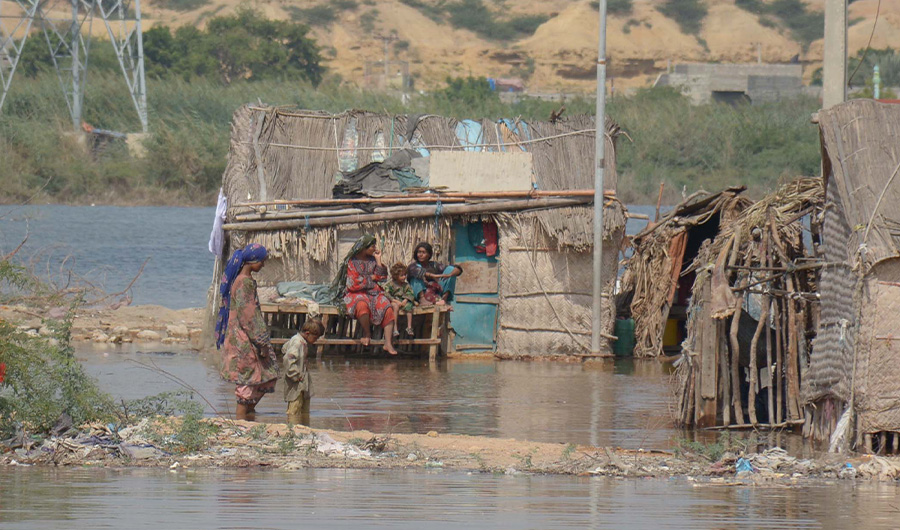
Women sit at a bench as water engulfed their house in Chashma Goth, Karachi, due to a cyclone in the Arabian Sea on Sunday night. Photograph taken on Oct 28, 2019 (AN Photo)
As seawater breached the coastline across the southern edge of the country, many activists, who have been concerned about sea erosion, said the government was not doing enough to prevent these settlements from vanishing underwater.
“Even a slight effect of a storm can submerge these communities,” said Zuhaib Ahmed Pirzada, who was part of the Restore Water Movement, a rally that was taken out in July this year to release enough river water into the sea.
“Despite the fact that the sea intrusion has engulfed 2.5 million acres of land in Thatta, Badin and Sujawal districts, the authorities are paying no heed,” he said.
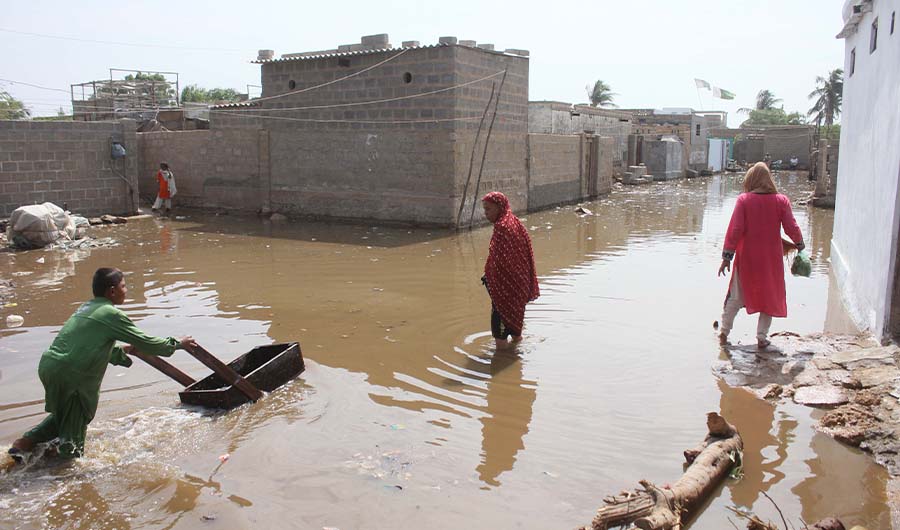
Seawater flooded people’s homes in Chashma and Rehri Goth, two fishing villages on Karachi’s coast, due to high tides caused by Cyclone Kyarr in the Arabian Sea on Sunday night. Photograph taken on Oct 28, 2019 (AN Photo)
Since the authorities did not release adequate fresh water downstream from Kotri Barrage, Pirzada added, not enough silt was going into the Indus River Delta which, consequently, was putting coastal settlements at risk of being overrun by seawater.
Sea erosion had already drowned 28 out of 42 such parishes in Kharo Chan Taulka, he noted. “The situation has also been aggravated by climate crisis,” Pirzada said.

Seawater flooded people’s homes in Chashma and Rehri Goth, two fishing villages on Karachi’s coast, due to high tides caused by Cyclone Kyarr in the Arabian Sea on Sunday night. Photograph taken on Oct 28, 2019 (AN Photo)
The Indus River Delta has 17 creeks which enter into the Arabian Sea with 15 of them in Thatta, Sujawal and Badin. Before Pakistan came into being, Pirzada noted, 90 million acre-feet (MAF) of water was released from Kotri Barrage to the delta. In 2018, this figure decreased to 1.7 MAF.
“Releasing water is the domain of the federal government. All we can do is rehabilite and provide relief to the people. It’s true that these villages will vanish due to climate change. If sea erosion cannot be stopped, the fishermen will have to leave, but they say they cannot do that since they are living here for centuries,” Pakistan People’s Party lawmaker, Agha Rafi Ullah, told Arab News.

Seawater flooded people’s homes in Chashma and Rehri Goth, two fishing villages on Karachi’s coast, due to high tides caused by Cyclone Kyarr in the Arabian Sea on Sunday night. Photograph taken on Oct 28, 2019 (AN Photo)
Meanwhile, fisherman Shafi Muhammad said he had spotted a place atop a nearby mound as a safe place for his children.
“Let’s see how things unfold,” he said. “We have no hopes from the authorities.”



